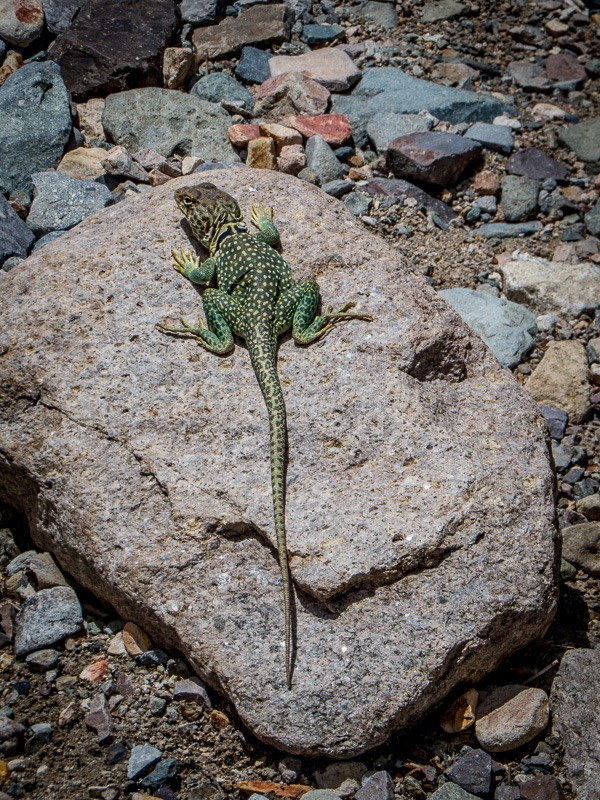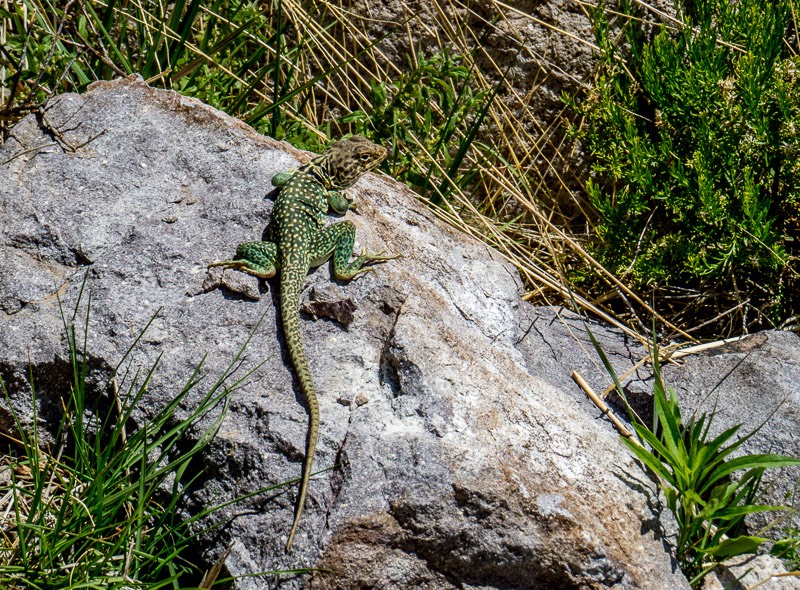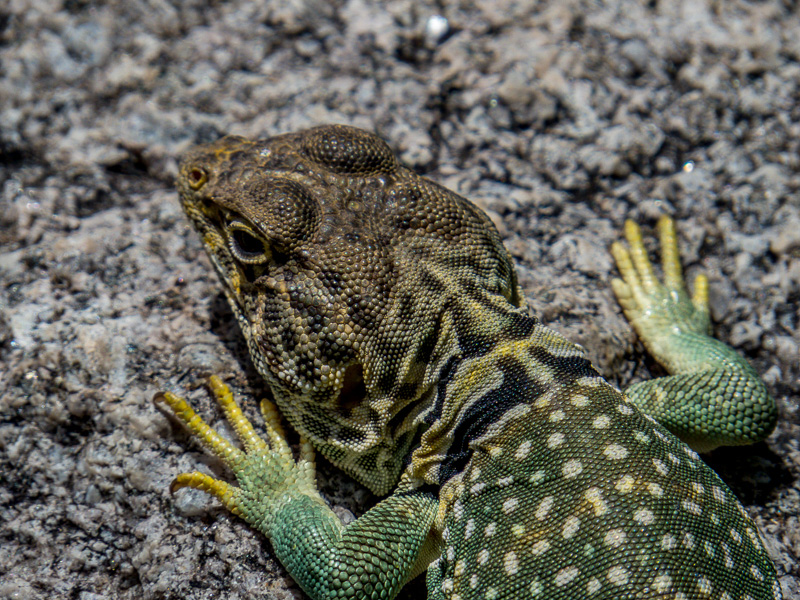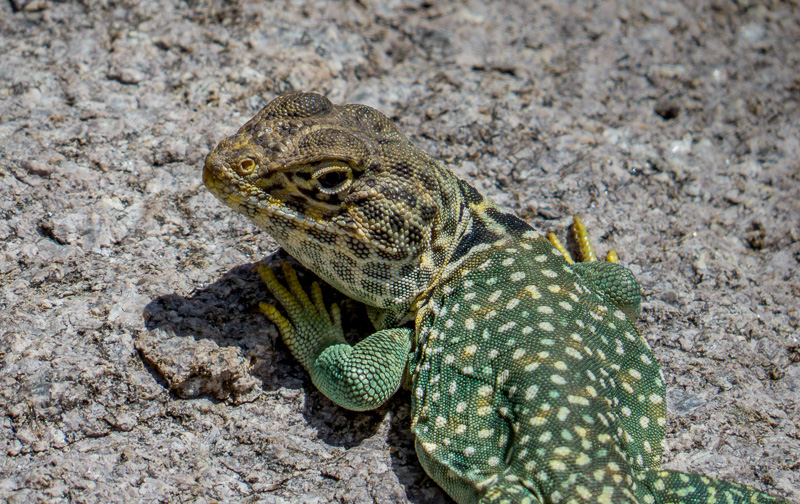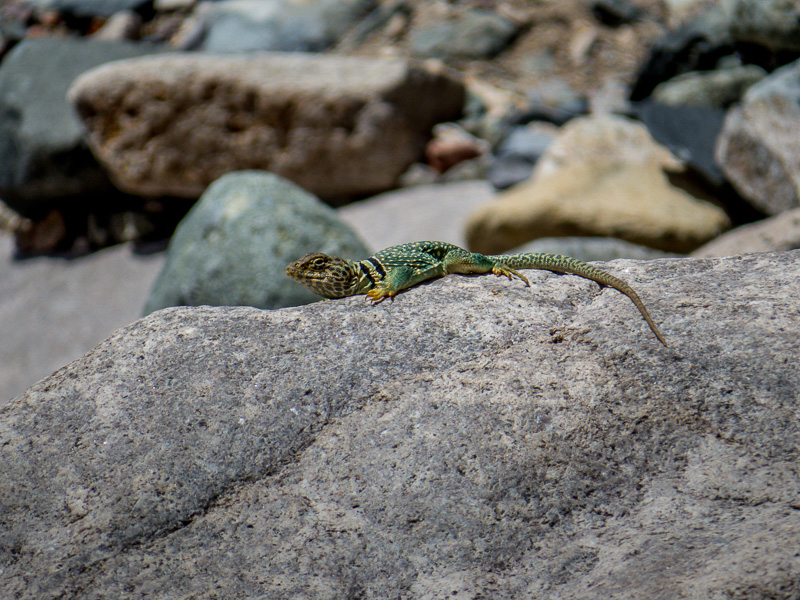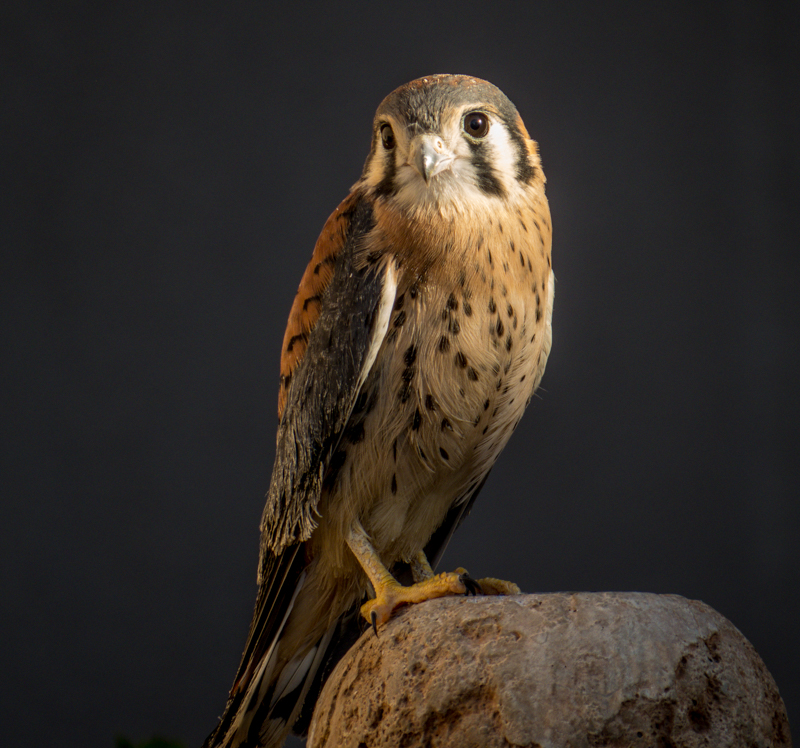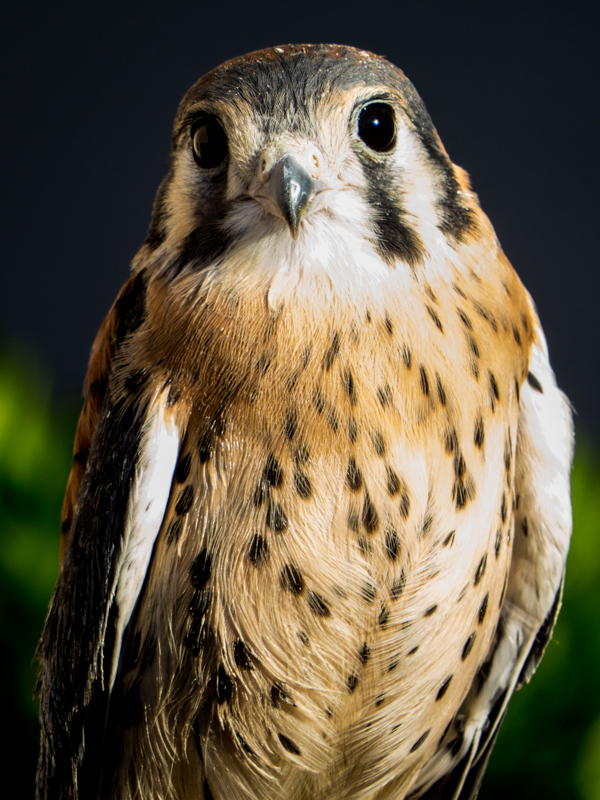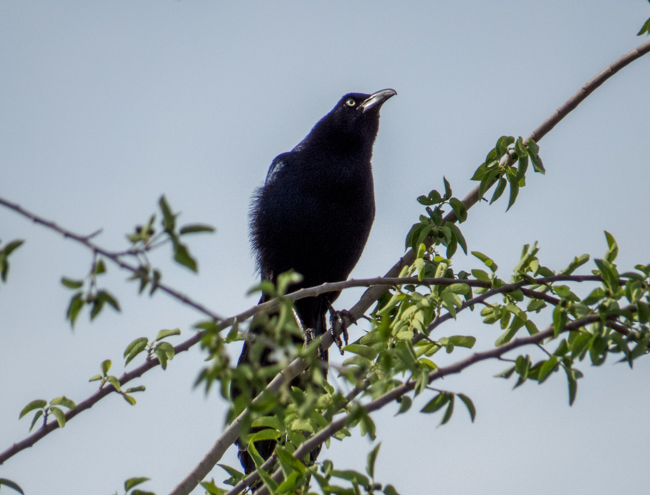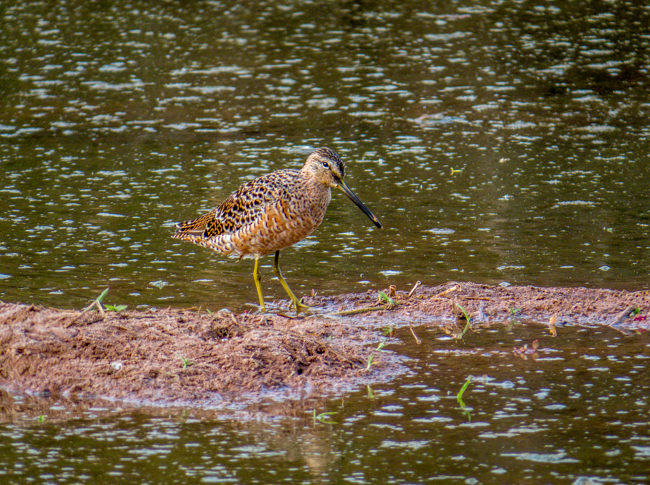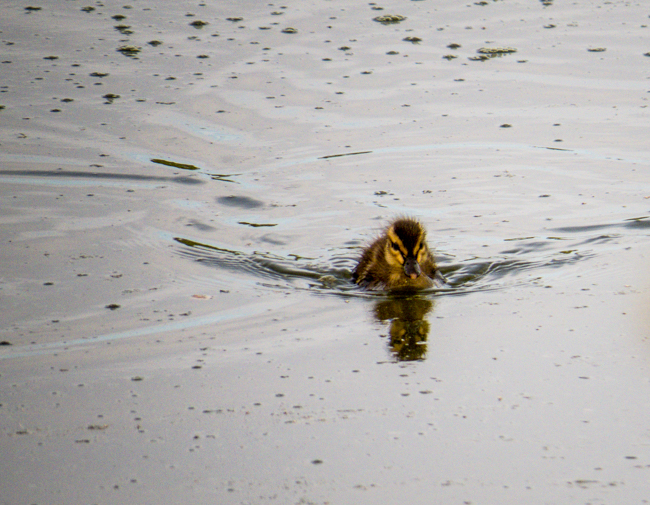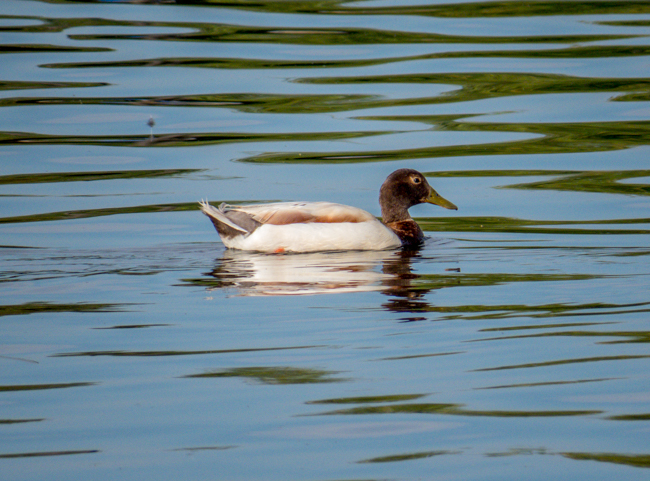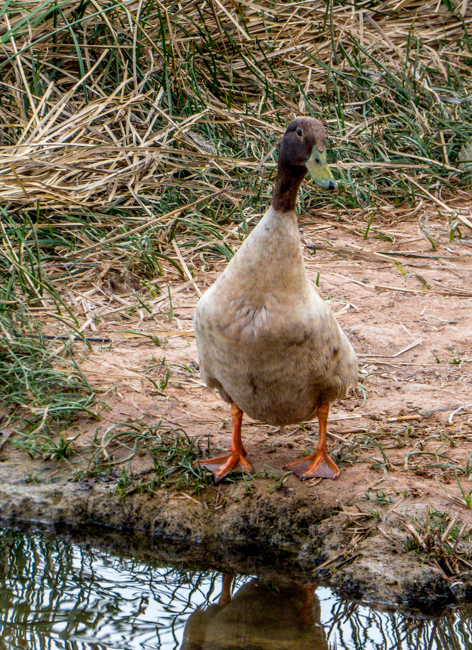Sierra Vista, AZ is known for the birds that visit that area year-round. There are migratory birds that leave south and central America as well as Mexico and spend part of the summer in the southeast portion of Arizona. While visiting that region recently, we took note of a house sparrow nest in a tree and a male and female that were taking care of their young.
In the picture (below), the “dad” is bringing food to the babies. If you look closely you can see a grasshopper (or similar insect) just to the left of the tip of the yellow arrow (center of photo).
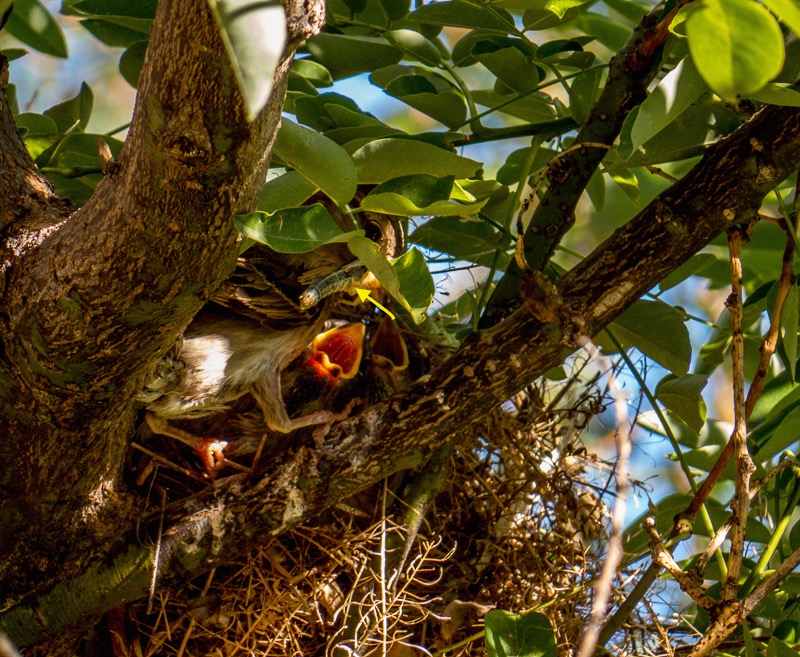
The adult bird is getting ready to “cram” the insect down the throat of the chick. They do this with great energy.
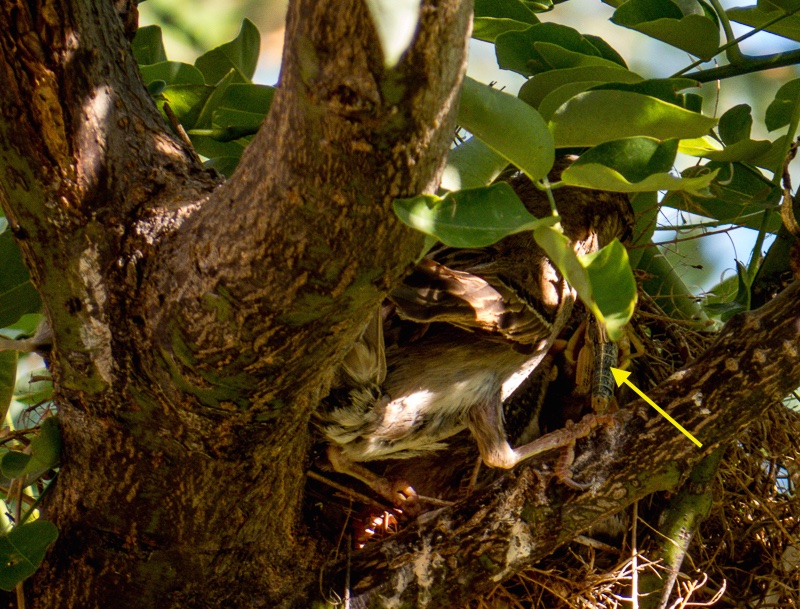
In this case, as in some bird species, both adults take turns feeding the chicks. This is a picture of “mom” watching the meal being delivered and perhaps providing instructions.
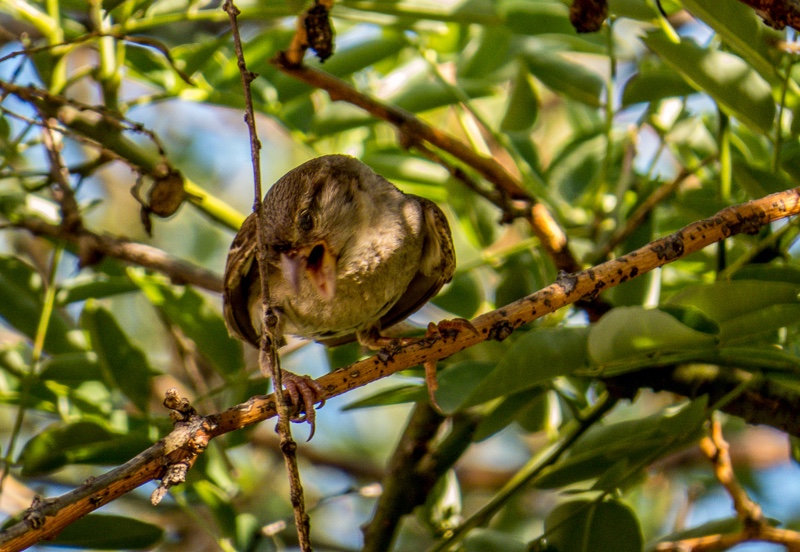
The male bird has left for a “refill” and both chicks look on in anticipation. The one on the left almost appears to be frowning as it awaits its turn.

Here is another photo of the chicks looking on with apparent increased vigilance and vocalizations.

This scene repeated itself over time and we enjoyed watching the protocol of the house sparrow for taking care of its fledglings. It is estimated that these chicks were just a few days away from leaving the nest as they are rather large; as chicks go.
Read More:
House Sparrow (The Cornell Lab of Ornithology)
.JBRish.com originally published this post
